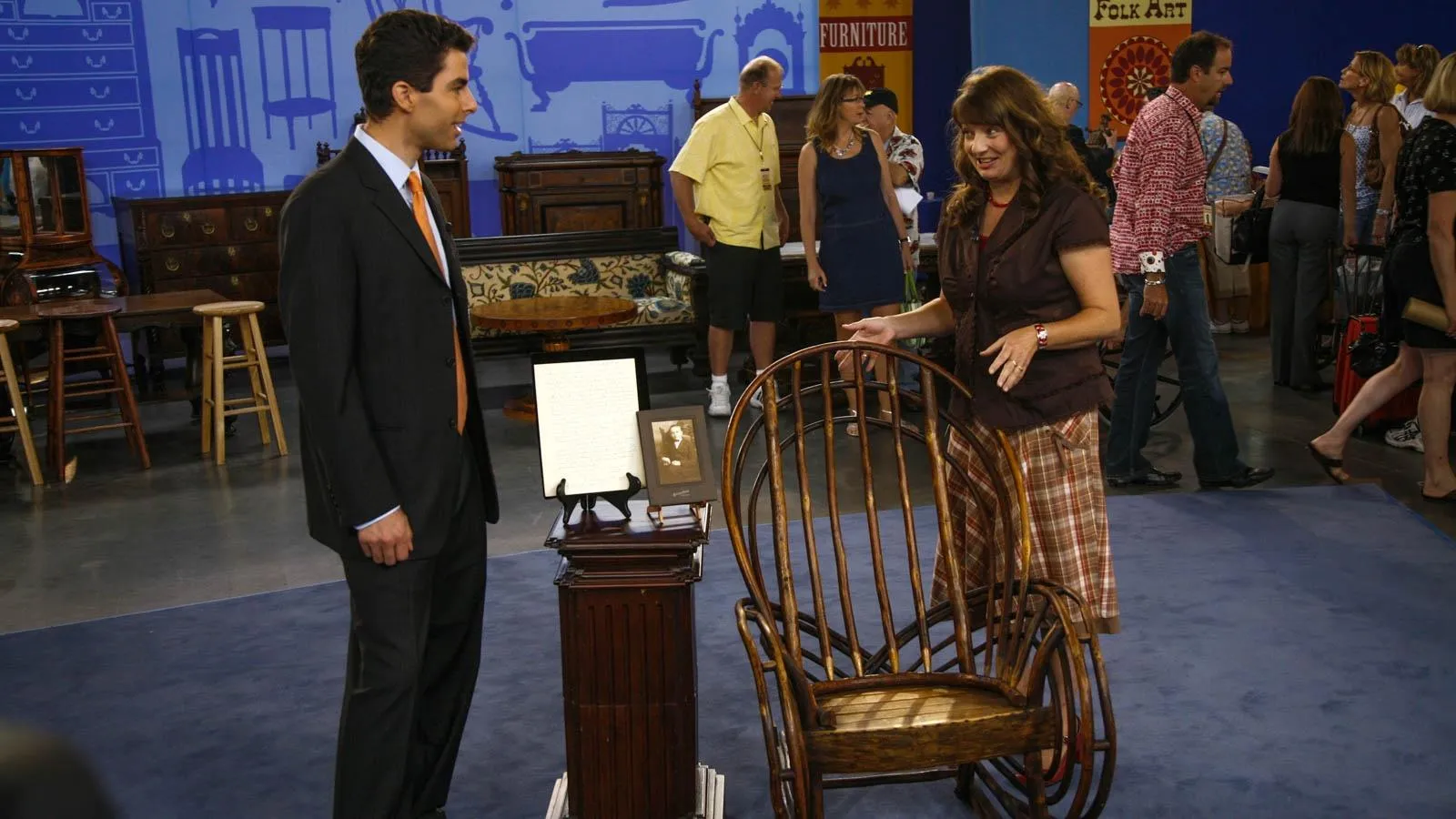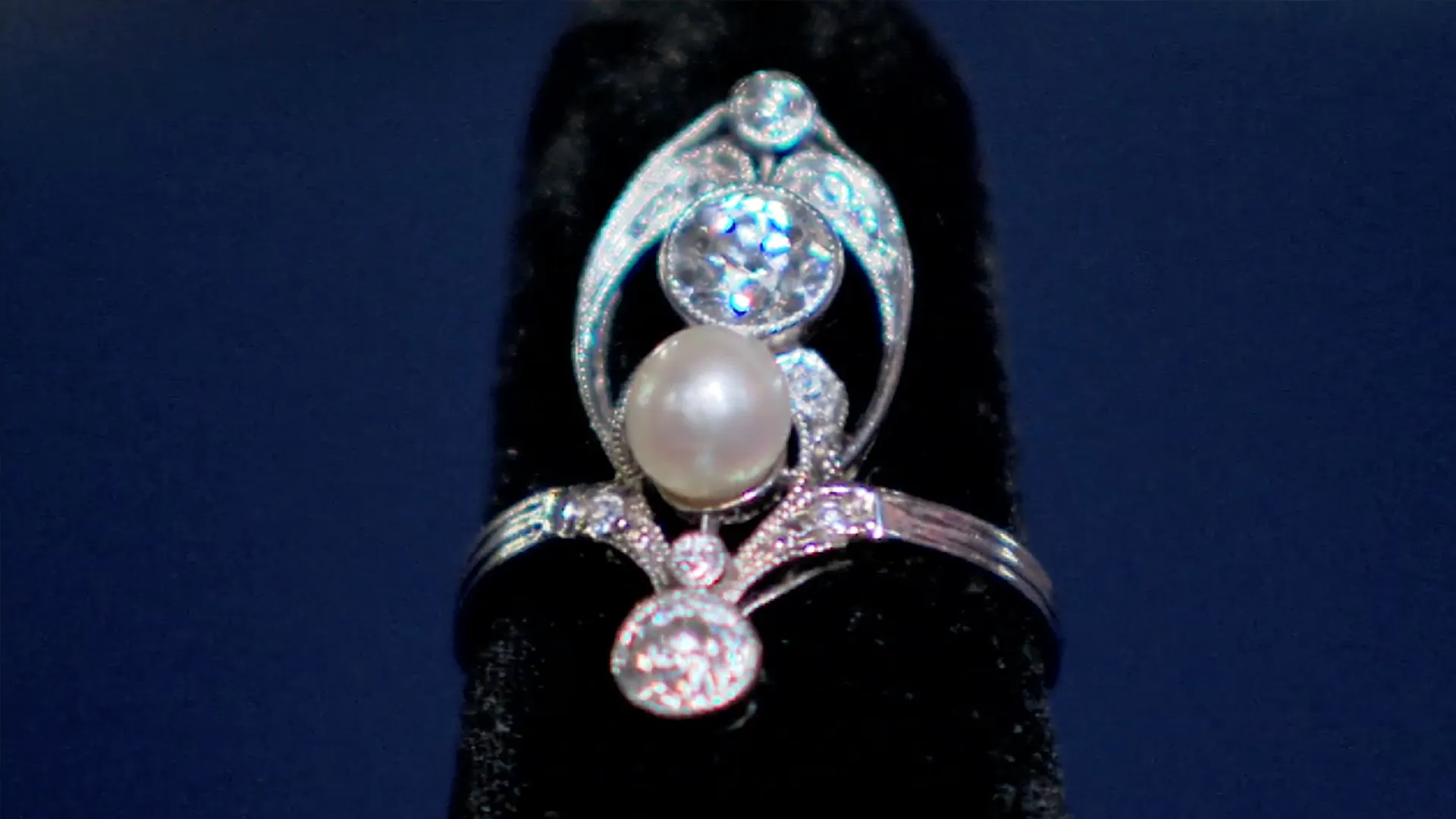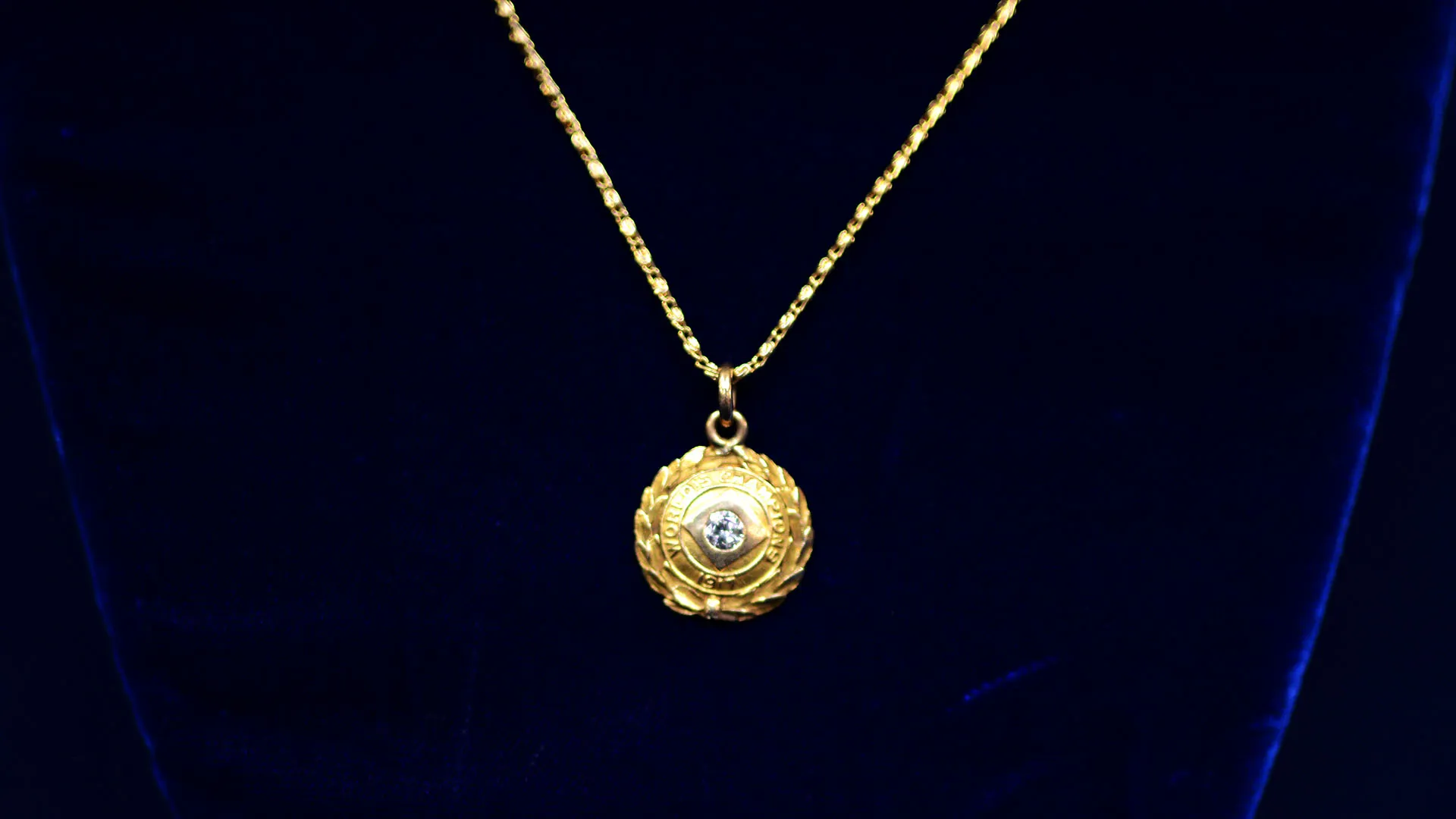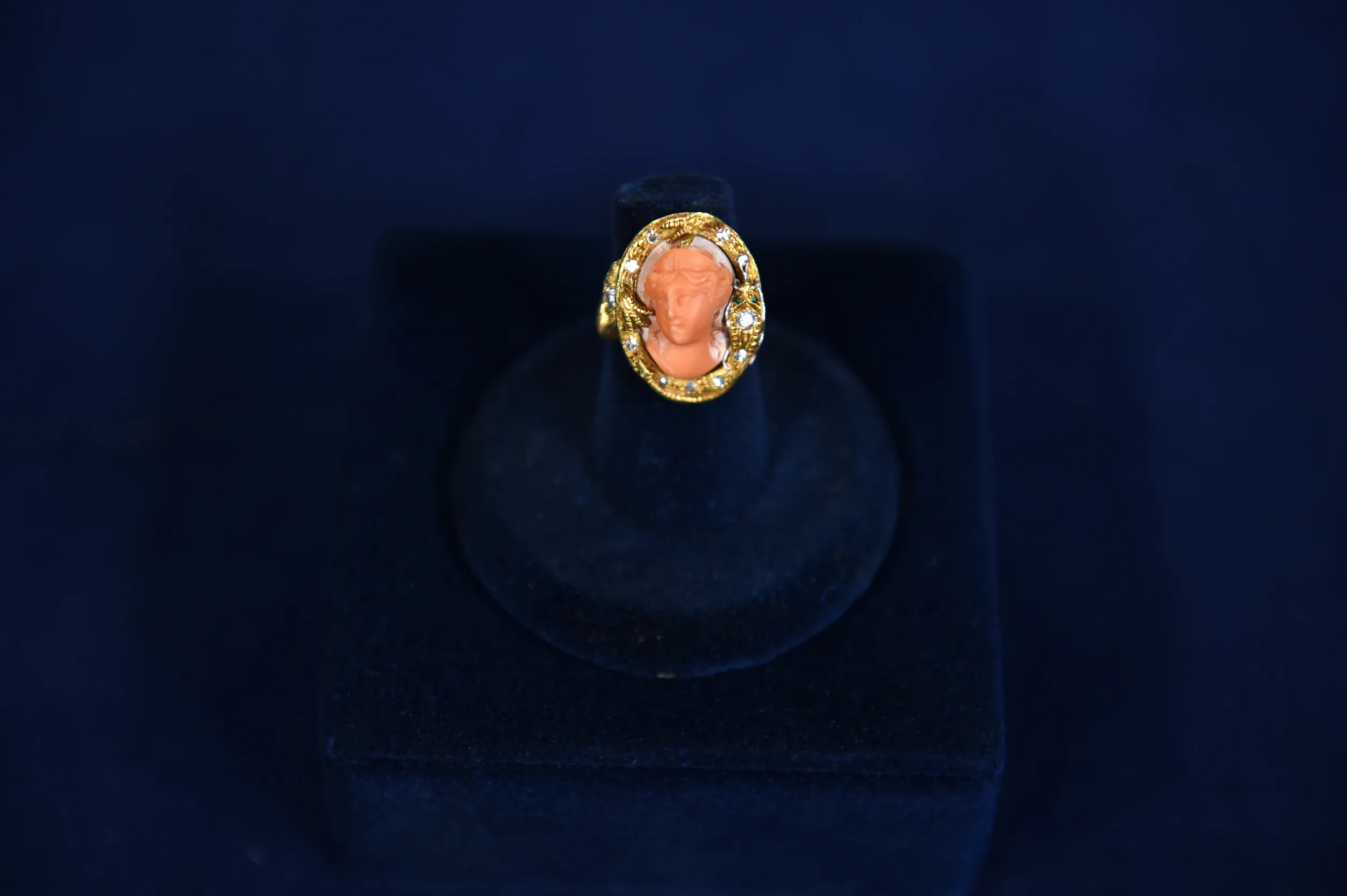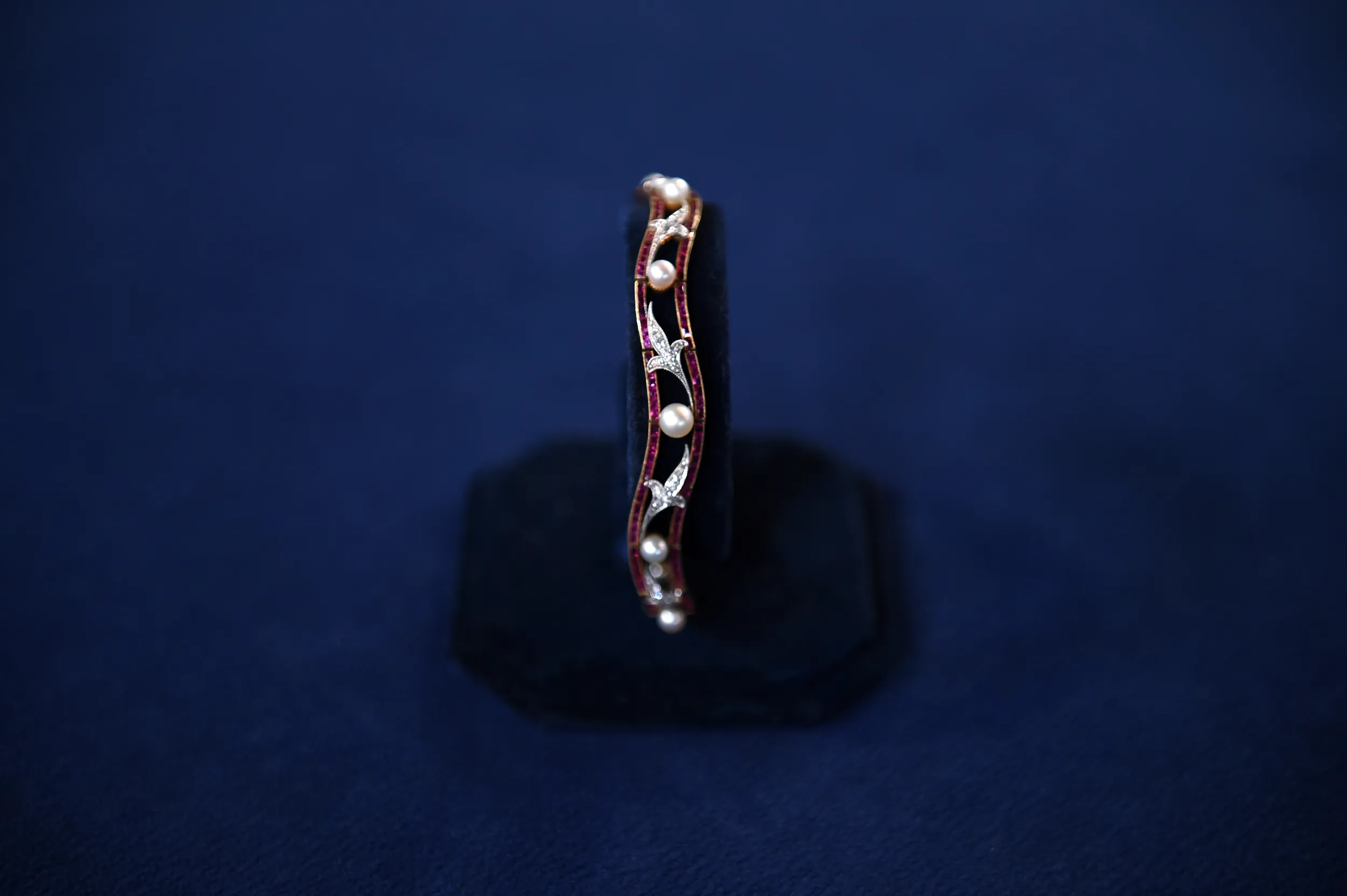GUEST: My grandmother saw it in a jewelry store window in San Francisco in the early 1920s or before, and she was quite taken with it, and she bought it. And she called it a poison dart ring, but apparently there are no darts involved.
APPRAISER: How did she come to the idea that it's a poison dart ring?
GUEST: It has a little hole in it, through which... Apparently, there used to be a button, but she thought that a dart would go in, and you'd push down on the top of the ring...
(both chuckle)
GUEST: ...and that would shoot the dart into your enemy, who you were shaking hands with.
APPRAISER: Wow.
GUEST: She was told it was worn on the thumb.
APPRAISER: Mm-hmm.
GUEST: And she was told that Cellini made it for Queen Isabella.
APPRAISER: Oh.
GUEST: However, Queen Isabella died when Cellini was four, so we don't quite believe that one.
APPRAISER: Have you ever showed this to anybody, gotten any opinions?
GUEST: I showed it to someone who thought that it was a Renaissance piece...
APPRAISER: Mm-hmm.
GUEST: And gave me a jewelry value, but they didn't know anything else about it. They'd never seen anything like it.
APPRAISER: I think that it's not a Renaissance ring. I think it's a Renaissance Revival ring. The Renaissance Revival took place in England and Italy and other parts around Europe from between around 1860 through around 1900. It's sort of a reaction to industrialization. It's a return to an older aesthetic, when things were simpler. We feel that it's probably made in England. I don't think it shoots poison darts, but it is a poison ring. Or it's made in the form of a poison ring. What we're looking at here is an 18-karat-gold ring, which is in the shape of a salamander or maybe some sort of a frog. And it's set with rose-cut diamonds of different cuts. There's round ones and triangular ones and a pear-shaped one. And then it's got table-cut diamonds, and these are all diamond shapes that ha, would have been used in the 15th, 16th century, when Renaissance jewelry was being made. But the ring is really heavy. It's very heavy gold.
GUEST: Mm-hmm.
APPRAISER: And the Renaissance jewelry is much lighter. It's hollowed out. Now, it does open. The frog, or salamander, has been enameled nicely on the inside with colored enamels. If I turn this ring over, we can see champlevé enamel underneath, done in sort of an Arts and Crafts pattern...
GUEST: Mm-hmm.
APPRAISER: ...where there's been a coil of green enamel and then leaves enameled in with the blue over here. I'm not sure that it's a thumb ring. I suspect it might be a gent's ring. Men in the 19th century wore more jewelry than in the 20th century. Or there's another possibility: women would wear rings on the outside of their gloves. Do you have any idea now of what the material value of the piece was?
GUEST: Someone told us that it was, that the jewelry value, just the stones and the gold, was about $1,000.
APPRAISER: Just because it's so exciting, it's such an interesting form, it's exotic, it's a wild animal...
GUEST: Yeah, it's really fun.
APPRAISER: People like wild animal jewelry. We feel that, at auction, this ring would take an estimate in the range of $5,000 to $7,000.
GUEST: Oh, really? Oh, that's great.
APPRAISER: Yeah.
GUEST: It's not for sale.


